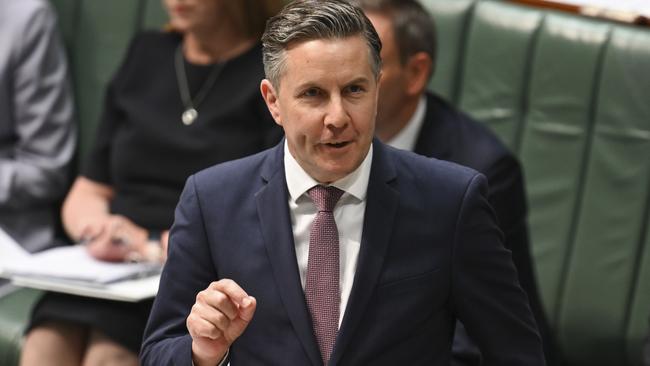Full List: Best private health funds for Aussies as premiums rise
Private health insurance premiums have climbed again. Find the best deal for your family and your budget using our calculator tool.
Health
Don't miss out on the headlines from Health. Followed categories will be added to My News.
Health fund members are facing further cost of living woes with insurers funds hiking their premiums up to 4.1 per cent in a move that will cost families hundreds of dollars a year.
Health Minister Mark Butler announced on Tuesday morning he had approved an “average” premium rise of 3.03 per cent, which is less than inflation (4.1 per cent).
However, the nation’s fourth largest health fund NIB announced it was raising its premiums by more – an average of 4.1 per cent.
NIB CEO and Managing Director Mark Fitzgibbon blamed his fund’s higher premium rise on the return of hospital and ancillary treatment, post Covid-19 comma and a rise in health and medical treatment costs.
Mr Butler said the average 3.03 per cent increase across all health funds was well below the annual rise in wages (4.2 per cent), lower than the rise in social security payments and inflation.

This is the second year in a row that wages, as measured by the wage price index, have grown faster than health insurance premiums, he said.
The increase in health insurance premiums is much lower than the increase to the cost of other insurance products, which rose by around 17 per cent in 2023, he said.
“I wasn’t prepared to just tick and flick the claims of health insurers, as the Opposition was urging me to do. I asked insurers to go back and sharpen their pencils and put forward a more reasonable offer for the 15 million Australians with private health insurance,” the minister said.
By taking the time and going through a proper process to interrogate the claims of insurers, the Albanese Government has achieved a better deal for Australians, he said.
Most of the major funds will raise their premiums by more than the “average” figure announced by the Health Minister.
Australia’s largest health fund Medibank will raise its premiums by an average 3.31 per cent and Bupa, the second largest fund by 3.6 per cent.
If you want to avoid the premium hike you can prepay your premium and “lock in” your 2023 rate.
To do this you will need to pay the entire year’s premium before April 1.
Private Healthcare Australia CEO Dr Rachel David said “health funds are walking a tightrope between keeping premiums as low as possible to maximise access to private health, and providing adequate funding for hospitals and frontline health workers to deliver quality care”.
“Our hospitals need to pay significantly more for staff recruitment, power and food and the funds need to be able to cover these costs. Health funds are also paying more for essential services like cyber security and IT services to support billing and claims,” she said.
Some health insurance members are in line for one final cash handout from their funds in the next few weeks, as they return profits made from Covid surgery bans and treatment delays.
Health fund profits soared by more than 110 per cent last financial year to more than $2.187 billion.
And insurers have experienced a surge of more than 865,000 new members, as people try to avoid public hospital waiting lists.
This means the funds have capacity to handle a below inflation premium rise.
Australian Private Hospitals Association chief Michael Roff said while private hospital services were now finally back to pre-Covid levels, there had not been the expected increase in activity that should have come with an ageing population and the jump in new health fund members.

Four private hospitals around the country had closed in the last few months, he said, while others had ceased providing maternity and other services that were no longer profitable.
“We think there is an onus on insurers to help hospitals remain viable, otherwise they won’t have a product to sell,” he said.
During Covid, many funds delayed their rises until later in the year as a way of returning some of the huge profits they made from Covid surgery bans to their members. But this practice will now come to an end.
The minister has told funds for the first time in four years every health fund will have to revert to raising their premiums once a year on April 1.

The Rous family said yet another rise in health insurance premiums is “sickening”.
“It’s exhausting really, it’s just on top of everything else; families like us, we feel the pinch,” Max Rous said.
They have already ditched their life insurance cover as they struggle with rising mortgage and business interest rates.
However, Mr Rous and his veterinarian wife Nicole still believe in the importance of health insurance.
“It’ll be one of the last things that we would compromise on,” Mr Rous, from Hawthorn East in Melbourne, said.
“We haven’t been on a proper family holiday for many years. We’ve certainly cut back on eating out.”
More Coverage
Originally published as Full List: Best private health funds for Aussies as premiums rise
Read related topics:Cost of Living





